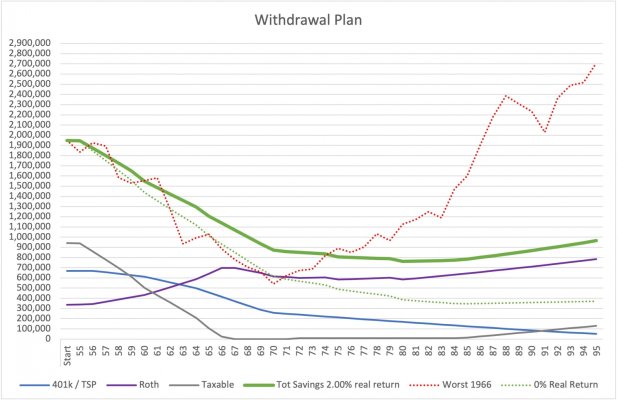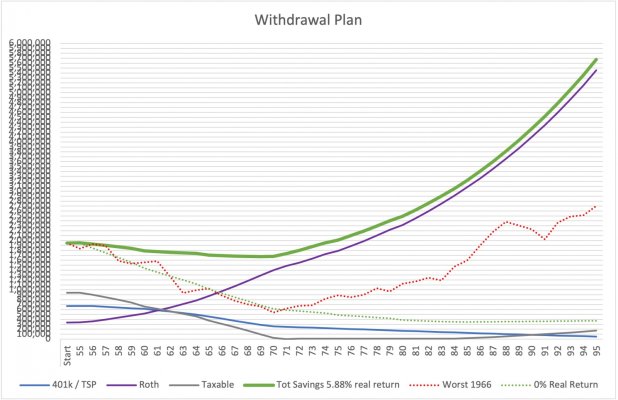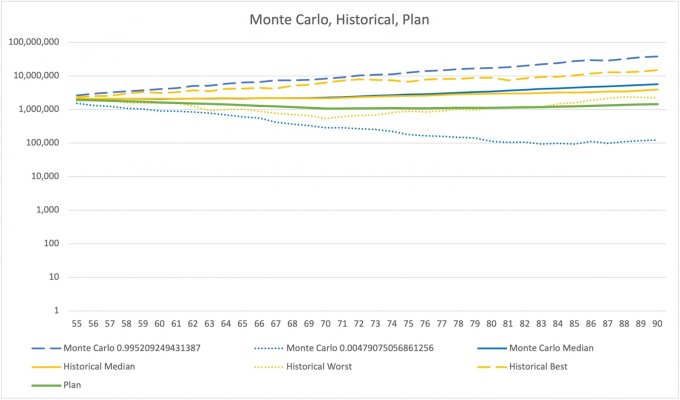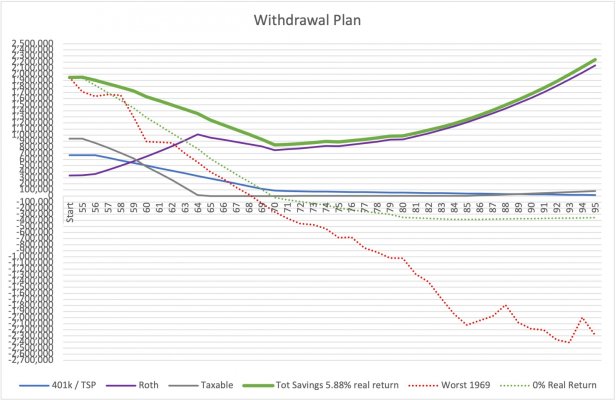Starting back in 2010, I ran a calculation in Excel, to see what kind of return I'd have to make, to keep from ever running out of money. It was based on my invested assets at the time, spending $3,333/mo ($40K per year), and I ran it out to April 2070, which is when I would hit 100...presuming I lived that long. The idea of the spreadsheet was to get the April 2070 balance down to as close to zero as possible...you know, the old check of making sure the check to the undertaker bounces.
I started this back in September of 2010. At the time, I had about $537K saved up. So for that to throw off 40K per year, I would've had to make 7.41% per year. Now this doesn't take inflation into account, so that would have to be, 7.41% above inflation. And, in the real world, nobody has the same, consistent return year after year. But, it was just a little exercise. And it doesn't take SS into consideration. But, I wanted to see how that number would change, as I aged, built up a larger nest egg, and had fewer years to plan for.
From 2011 onward, I tried to always run the number based on my balance as of April 1. On 4/1/2011, I had $660K, so the rate of return needed was down to 5.91%.
Over the years, the spreadsheet became less relevant. Part of it was that I knew I'd need a lot more than $40K per year to live off of. But, I still update it once a year, just to see how that percentage goes down. For 4/1/2021, something interesting happened. My invested assets were at $2,324,406, and I was still assuming $3333/mo. Well, for the first time, I calculated I could actually lose a bit every month, and still not run out of money. I calculated that if I consistently lost 0.6% per year, spread out evenly over every 12 months, I'd still have a bit left when I hit 100.
At the end of the day though, it's a pretty useless exercise, and doesn't really predict anything but the obvious...the more you make, the less likely you are to run out of money!




